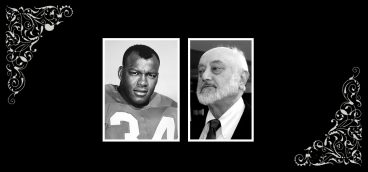In October, one of Pittsburgh’s children is coming home and throwing a big party. That child is the Carnegie Corp. of New York and the “party” is a two-day celebration of the most recent winners of the Carnegie Medal of Philanthropy.
The biennial event, the Nobel Prize of philanthropy, has honored the titans of the eleemosynary world: The Gates family, the Rockefellers, George Soros, Ted Turner, Brooke Astor, the Annenbergs, Agnes Gund, the Hewletts and Packards and several more international benefactors. On Oct. 17, at the Carnegie Music Hall in Oakland, Carnegie Medals will go to Teresa Heinz on behalf of the Heinz family, the Mellon family, Ratan Tata on behalf of the Tata family, and Eli Broad.
The event is being held here because four of Carnegie’s organizations are here: The Carnegie Museums, Carnegie Mellon University, The Carnegie Hero Corp., and the Carnegie Library of Pittsburgh. It is another opportunity for the spotlight to shine on Pittsburgh, as the recipients and their august, but as of yet unannounced, presenters come to our city. But perhaps it should be much more.
Many tend to think of philanthropy in Pittsburgh as belonging to the past, and certainly the wealth that made the bulk of it was created long ago. Ironically, the longevity and success of this local largesse is such that it’s almost forgotten. Yet everywhere you look, you see the hand of Pittsburgh philanthropy: from the Cultural District to the universities; from UPMC to the riverfronts, museums, arts groups and parks; and from the Allegheny Conference to its historic flood and pollution control projects and the Pittsburgh International Airport. More than any major city in the world, Pittsburgh is the city philanthropy built.
Yet, for some, the region’s foundations must seem like disparate islands of mysterious wealth. “Why don’t the foundations contribute more to pay off the city’s debt?” ask some in city government.
There are better ways of thinking about Pittsburgh philanthropy. One is to consider philanthropy as belonging to Pittsburgh’s future. The Carnegie Corp. is particularly interested in expanding the idea of philanthropy internationally. And as wealth and the gospel of giving have spread, so too has philanthropy as an international business.
There lies the opportunity for Pittsburgh. What city is better poised to become the headquarters of that international industry than Pittsburgh? It was here that the modern philanthropy began with Carnegie and his famous thought that “He who dies rich, dies disgraced.” It is here that philanthropy has grown and flourished more than anywhere else — some 100 years later, we remain No. 2 in philanthropic assets per capita, behind Seattle with its Gates-Buffett philanthropic merger.
In order to move decisively into that international business, what do we need that we don’t have? With the Carnegie organizations and the many private foundations, we have many of the nation’s oldest, grandest and most successful philanthropic organizations. With the Pittsburgh Foundation, we have one of the nation’s oldest, largest and most successful community foundations. We have the Nonprofit Leadership Institute at Duquesne University, and we have the Bayer Center for Nonprofit Management at Robert Morris University. As a financial services center, we know how to make philanthropic assets grow.
Will this international industry grow? Are these the kinds of people we want traveling in and out of Pittsburgh? Do we have the history, experience and expertise in this field? Would more international flair and recognition be good for Pittsburgh? Should Pittsburgh become the center of this industry?
Fortune favors the bold.




